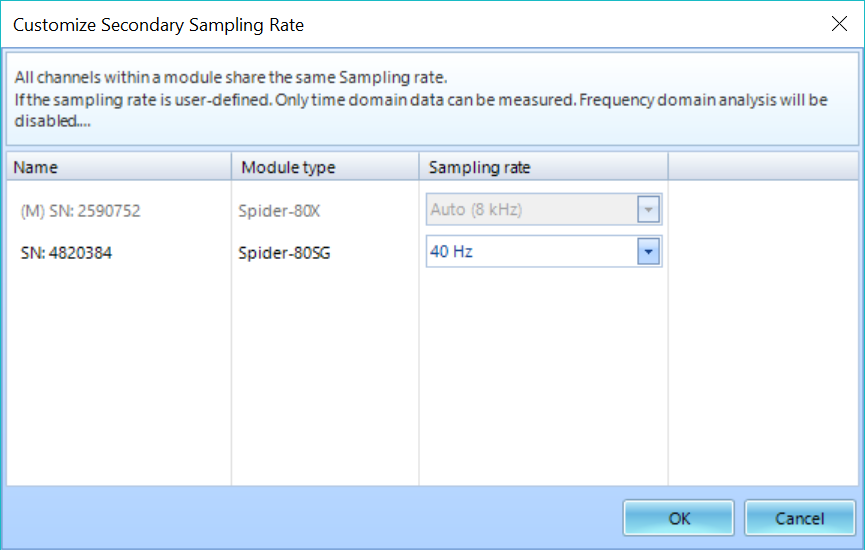Variable Sampling Rate for Synchronized Data Acquisition
The Spider-80Xi platform gives users the immense flexibility to combine the Spider-80Xi, Spider-80SGi or Spider-80Ti devices into one system with synchronized data acquisition. The Spider-80SG and Spider-80SGi can work as general-purpose data acquisition systems that not only supports strain measurement but also supports several sensor types requiring precision excitation voltage, including MEMS and strain gage based sensors. The Spider-80Ti on the other hand can acquire temperature data along with any other type of measurement quantity by using it with any combination of Spider-80Xs and Spider-80SGs.
Measurements acquired through the Spider-80SG or Spider-80SGi are static or dynamic in nature, often requiring a specific rate of acquisition. For example, strain measurements or temperature measurements that are taken along with acceleration require much lower sampling rates in comparison with the sampling rate at which acceleration is acquired. In several instances, specific sensors are deployed to gather accurate measurements in specific bands of measurement. For example, MEMS accelerometers are typically used to acquire low frequency acceleration data down to DC with high precision. In comparison, IEPE accelerometers excel at acquiring acceleration data at higher frequencies but have high noise during low frequency measurements. In order to capture data accurately at all bands, multiple sensors must be used.
In any application, the sampling rate plays a very crucial role and must be tailored to specific applications. A very low sampling rate would forgo the high frequency content while a high frequency rate would require large memory and computational power to store and process data.
In order to bridge the gap, Crystal Instruments introduced the variable sampling rate feature in the EDM 8.0 release to target a wide variety of applications requiring simultaneous and synchronized data acquisition at different sampling rates. The introduction of the variable sampling rate feature allows users to use different sampling rates across different devices within the same system. The units required for simultaneous measurement can include fast varying quantities such as acceleration and sound pressure along with the acquisition of slow varying signals (like strain, pressure, or temperature), thus providing flexibility to the user while keeping data synchronized.
The selection of sampling rates on each Spider front-end must is always a factor of 2n from the principle rate to ensure that the modified sampling rate on all boards are derived from the same oscillator. This will ensure that data acquired on all boards are time synchronized even when the sampling rates are different.


